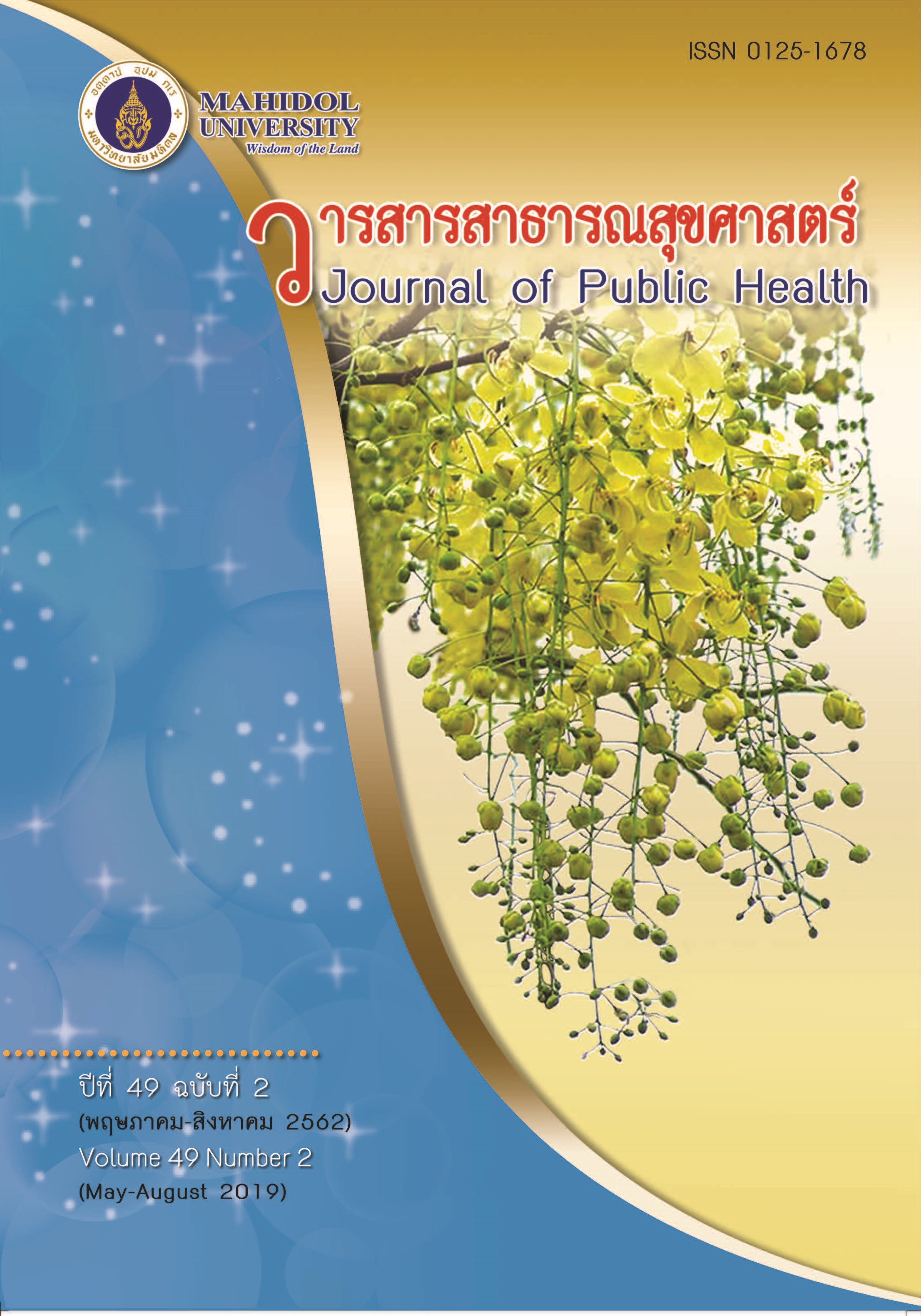Estimation of HIV Incidence Rate in Thailand Using the Bayesian Hierarchical Approach
Keywords:
HIV infection, disease mapping, HIV incidence rate, bayesian hierarchical model, interaction effect modelAbstract
HIV infection remains a major public health problem in Thailand. Disease mapping and statistical modeling of incidence/prevalence plays important roles in epidemiology to display the spatial risks on a map and explain the causal pattern between disease outcomes and potential risk factors. The Bayesian hierarchical method was proposed to fit with the HIV mapping data and to cope with the HIV modeling incidence among risk factors. The aim of the study was to estimate the HIV incidence rate in disease mapping application using the Bayesian hierarchical model. A useful source of informative data was retrieved from the NAP (National AIDS Program), collected by the National Health Security Office (NHSO) in Thailand 2017. The best fitted model was the interaction effect model. The top five provinces with the highest risk (incidence rate >8.9%) comprised Samut Prakarn (35.83%), Nakhon Nayok (26.28%), Pathumthani (13.20%), Phuket (12.38%) and Chumphon (12.28%), respectively. The Bayesian model could analyze HIV infection rate well among different areas. Several risk factors were able to explain the high risk areas with the relative risk estimates for HIV infection.
Downloads
Published
Issue
Section
License
Creative Commons License CC-BY-ND


